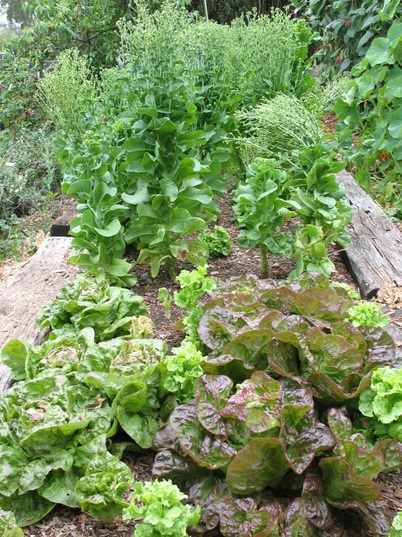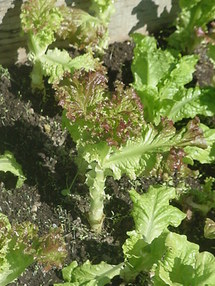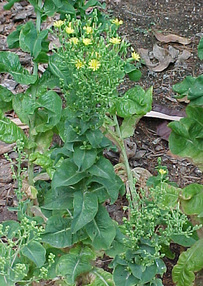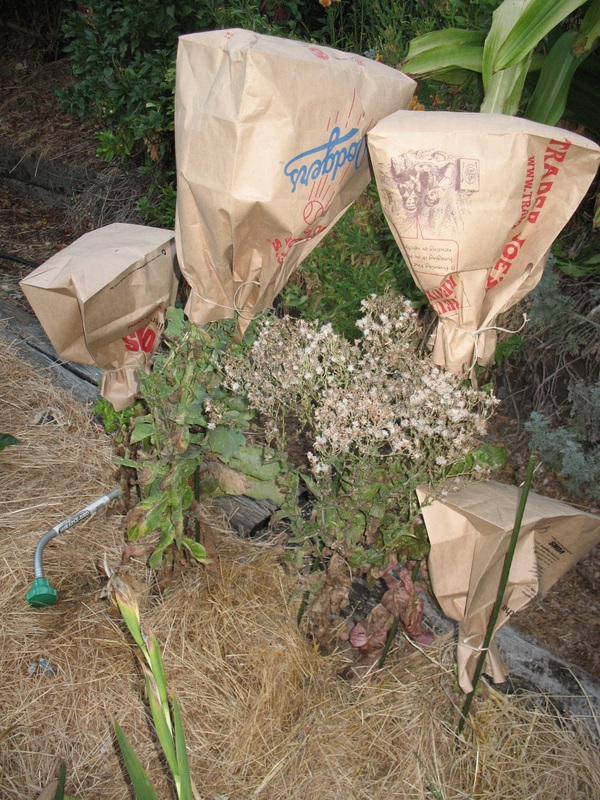 Different varieties of lettuce bolt at different times, some continuing to be edible while others become too bitter.
Different varieties of lettuce bolt at different times, some continuing to be edible while others become too bitter. First, I tasted a single leaf from every plant to see whether I could still enjoy it. The potential for bitterness is individual to each variety and each plant, so you can’t generalize; you must taste each plant. Then, if the test-leaf is acceptable, you can go ahead and harvest that plant – but only the younger leaves, leaving the top 4 baby-sized leaves for further growth. Cleanly tear off the older leaves for the compost pile – you don’t want to leave any foliage bits to attract snails and slugs. The remaining plant will look like a stick with a topknot on it.
Second, any plants that had become too bitter in my taste test, I pulled and added to the compost pile.
Thirdly, I watered in the lettuce bed to encourage the plants to continue to grow quickly in the hopefully cooler soil and air temperatures for yet another week at least until the next batch of leaves had developed for harvest – or at least the next taste-test.
Fourth, I took all of the harvested leaves into the kitchen and filled the sink with water, then gently turned the leaves into the water, gently submerging the leaves a couple of times and scooping off any of the bits of mulch. Let the lettuce soak for 15-30 minutes, submerging them a couple of times to make sure they’ve all been under the water for some of that time. Again gently, transfer a small handful of leaves from the water to a colander until they’re all out of the water. Drain the water, and remove any more mulch bits. Refill the sink. Put the leaves back into the water a second time, submerging and leaving for another 15 minutes or so.
This double-soaking process accomplishes two things – exchanging some or most of the bitter elements for plain water, and crisping up the lettuce.
Back into the colander to drain slightly, then into ziplock bags into the refrigerator, pressing out most of the air when you zip the lock, these bags will keep the lettuce fresh and crisp for up to a week.
This technique will also work later in the season, when the weather really heats up for summer, and my just-planted lettuce will do its reproductive thing and bolt.
Remember though, that if you truly loved some of that lettuce (that weren’t hybrid varieties), you can leave the bolting plant to develop fully so you can harvest the seed. It’ll take about another month to six weeks to complete this process because you must allow the plant to mature until it’s crispy-dry before harvesting the seed.




 RSS Feed
RSS Feed